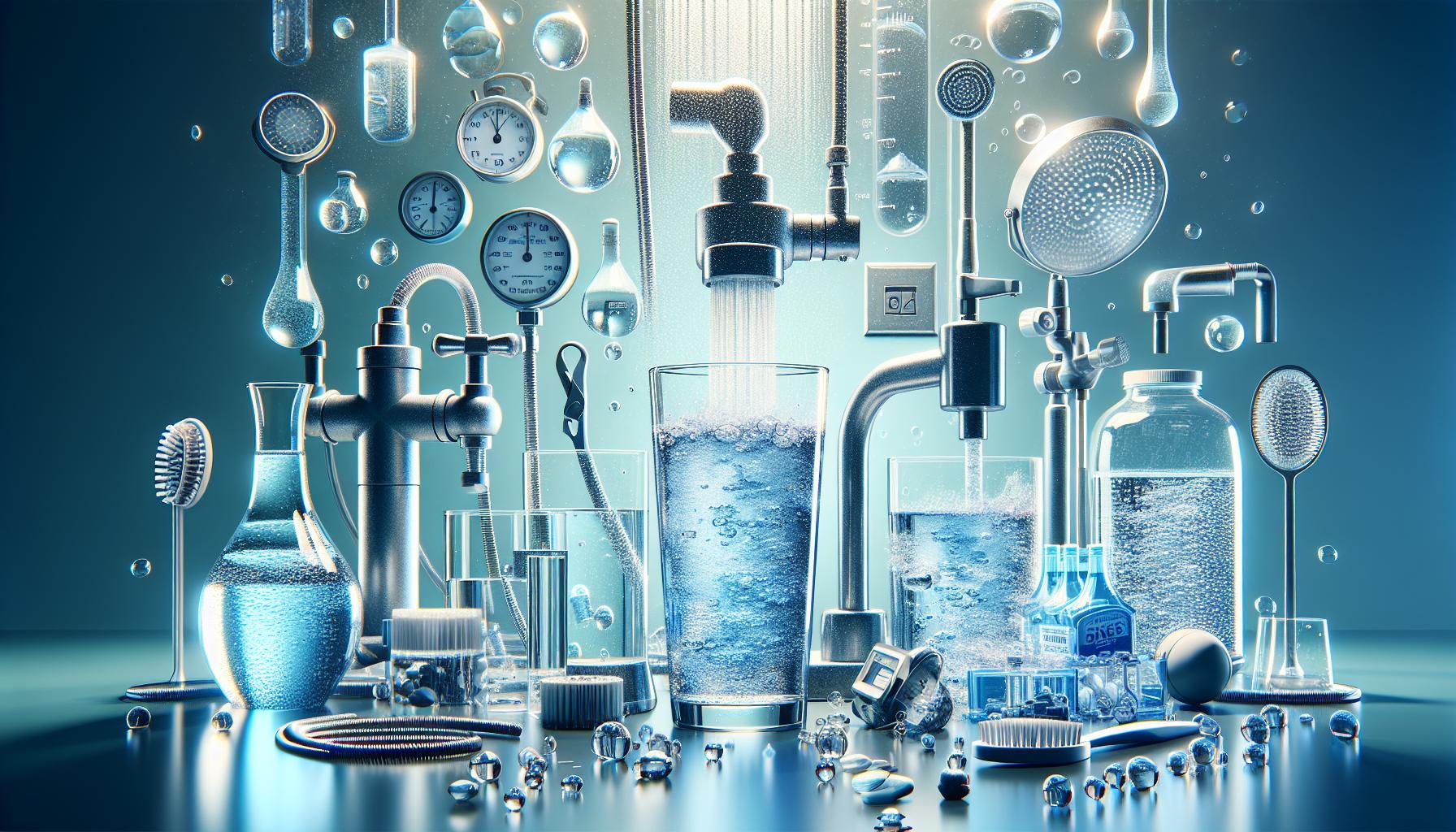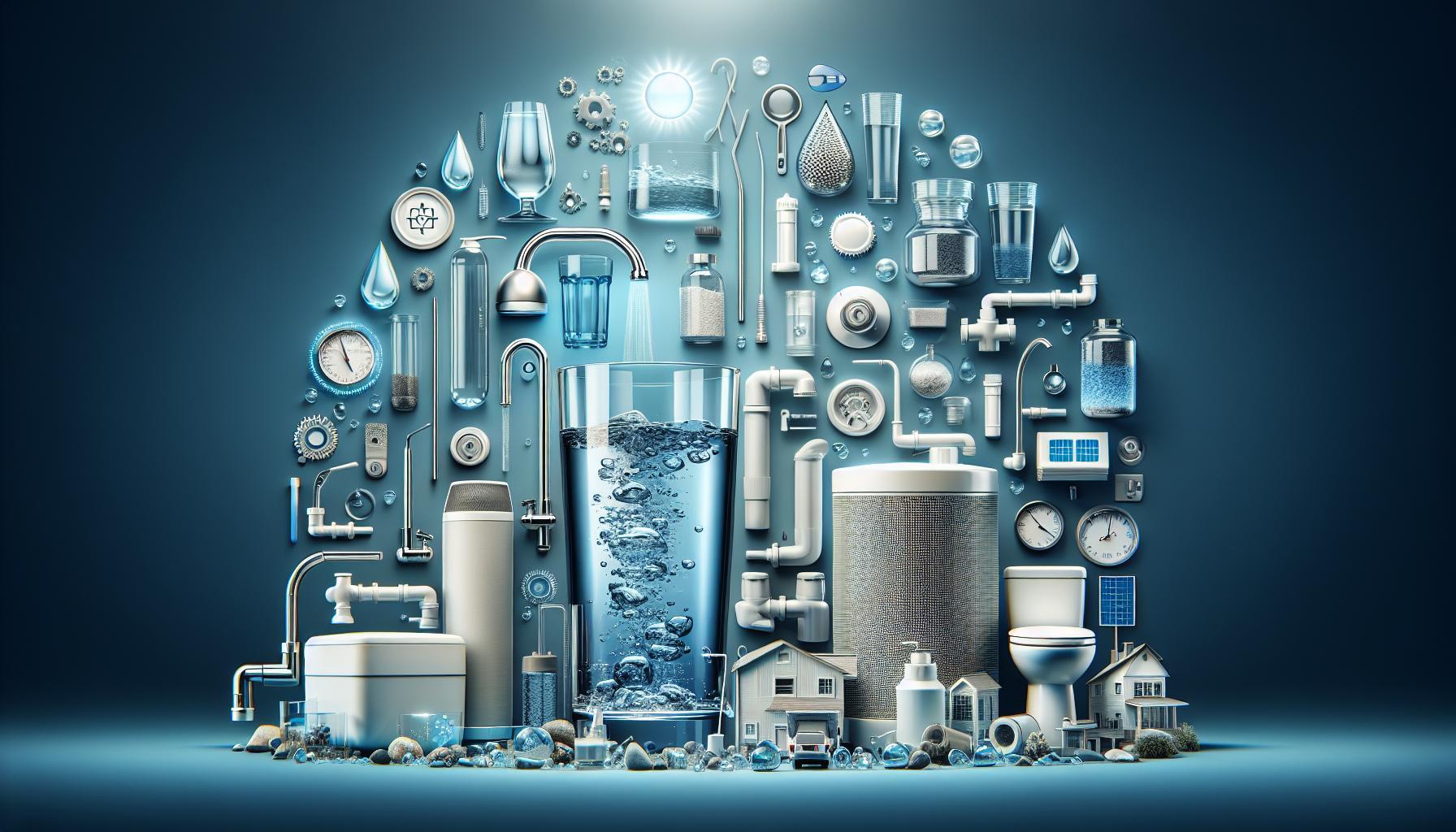With increasing concerns about water quality, many wonder if the water we use for showers is safe for consumption. Understanding the potential risks associated with shower water, which may contain bacteria, chlorine, and other contaminants, is crucial. This knowledge helps safeguard your health and make informed choices about water safety in your home.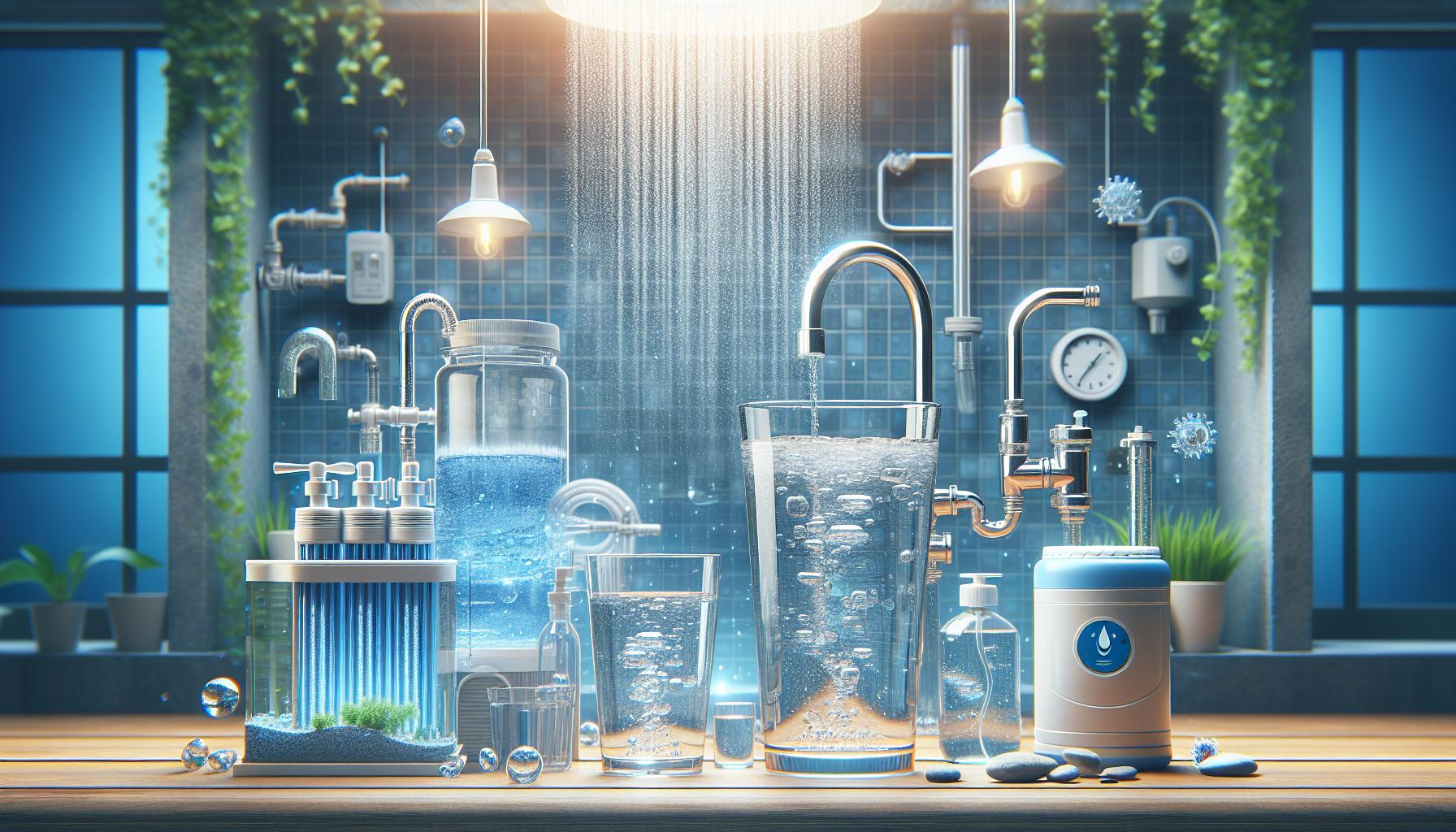
Understanding Shower Water: Is It Safe to Drink?
Drinking water from your shower might seem harmless, but it can pose significant health risks. When considering whether shower water is safe to drink, it’s essential to understand where the water comes from and the potential contaminants that may be present. Unlike tap water that is treated and tested for safety, shower water can be exposed to different sources of contamination, such as bacteria, metals, and even chemicals that can leach from pipes or fixtures.
Many homes use municipal water that is treated for drinking, yet this treatment may not guarantee safety after it reaches your shower. Over time, elements such as lead, chlorine, and bacteria can accumulate in your plumbing, potentially affecting the water quality. For instance, older homes, especially those with lead pipes or fixtures, might have higher levels of lead in shower water, which can be harmful if ingested. Moreover, biofilm and other microorganisms can thrive in the moist environment of shower heads, posing additional risks.
Key Risks of Drinking Shower Water
- Contaminants from Plumbing: Lead and other heavy metals can leach into the water supply through aging or corroded pipes.
- Bacterial Growth: Pathogens may proliferate in warm, damp environments, especially in poorly maintained shower fixtures.
- Chlorine Residue: Although used to disinfect drinking water, excessive chlorine inhaled during a shower can be harmful, and residual chlorine can pose risks if ingested.
- Shared Water Systems: If a building’s water supply is shared, contaminants from other units can flow into your shower.
Practical Advice
If you’re considering the safety of drinking shower water, it’s best to err on the side of caution. To minimize your risks:
- Install a Shower Filter: Investing in a water filter designed for showers can help reduce contaminants.
- Regularly Clean Fixtures: Maintain a routine for cleaning your shower heads and fixtures to minimize biofilm buildup.
- Know Your Water Source: Be aware of the quality of your home’s water supply. Check for any local water quality reports that can inform you about potential contaminants.
- Choose Bottled or Filtered Water for Drinking: When in doubt, opt for bottled water or water that has been properly filtered and tested for safety.
Understanding the nuances of shower water quality is crucial for your health. While the question “Is shower water safe to drink?” may have varying answers depending on specific circumstances, recognizing the potential risks allows you to make informed decisions about your water consumption.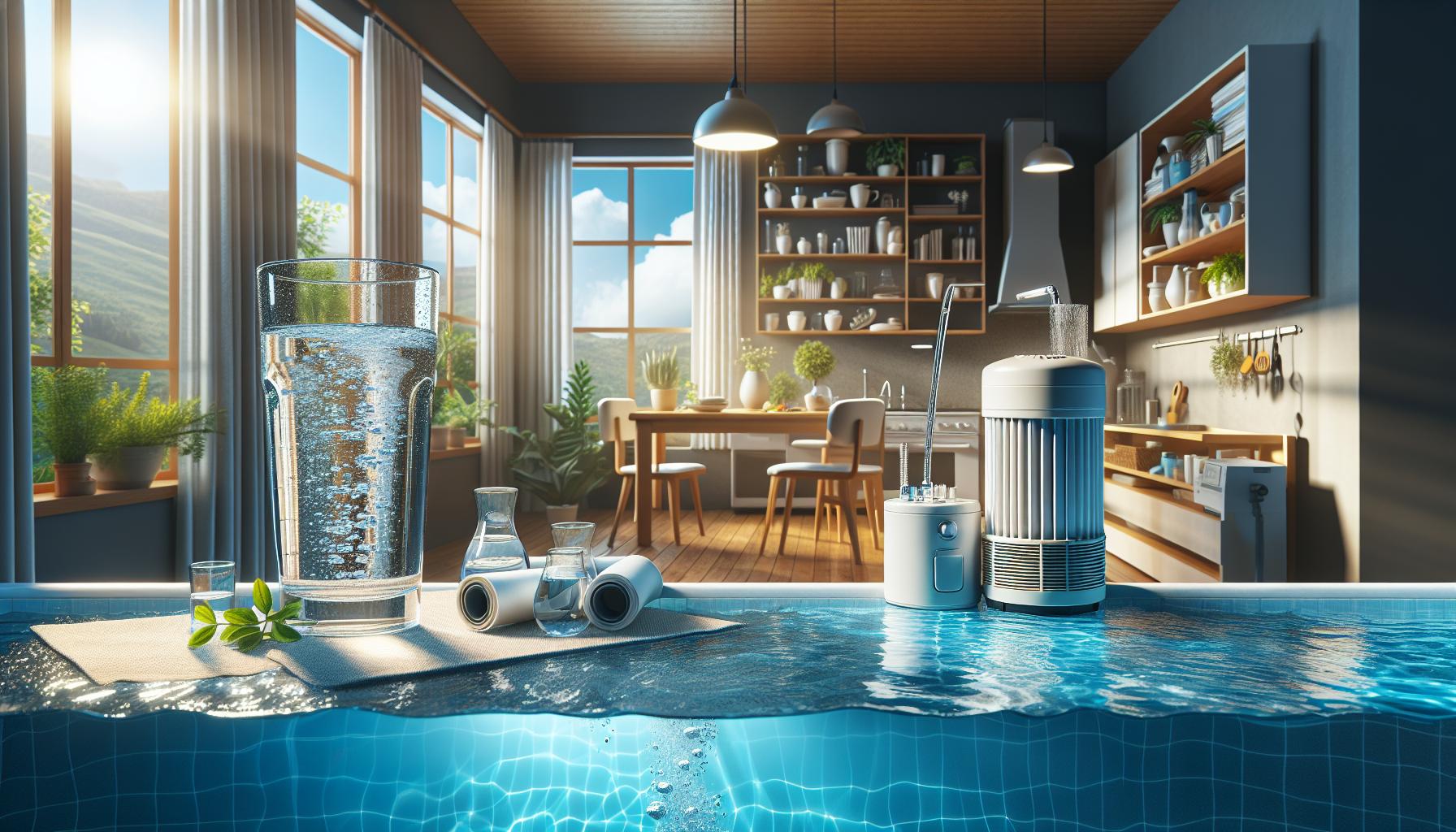
The Hidden Risks of Drinking Shower Water
Many people may not realize the potential dangers lurking in their shower water, especially if they consider it safe for consumption. While we often assume that tap water is fit to drink as we step into a warm shower, recent insights reveal a different story. Shower water can contain a variety of contaminants that pose hidden risks to health, raising significant concerns when it comes to the question: Is shower water safe to drink?
One of the primary issues revolves around contaminants that accumulate in shower water, similar to those found in tap water. Common contaminants include chlorine, heavy metals, and bacteria, which can enter the water supply through different means. These substances can be absorbed by the skin or inhaled as steam, leading to potential long-term health problems. Continuous exposure could contribute to conditions like respiratory issues, skin irritation, or even more severe illnesses due to toxins building up in the body over time.
Types of Contaminants
Understanding the specific contaminants can help you appreciate why shower water isn’t always safe to drink. Here are a few of the most concerning:
- Chlorine: Often used as a disinfectant, chlorine can irritate your lungs and skin, and may form harmful byproducts.
- Heavy Metals: Metals such as lead and copper can leach into water from plumbing, potentially accumulating in the body.
- Bacteria and Pathogens: Sources of well water can introduce harmful bacteria, posing serious health risks when ingested.
To further illustrate this point, consider the following table that outlines potential health impacts of these contaminants:
| Contaminant | Health Risks |
|---|---|
| Chlorine | Respiratory issues, skin irritation, potential carcinogenic effects |
| Heavy Metals | Nerve damage, developmental issues, kidney problems |
| Bacteria | Illness, infections, gastrointestinal problems |
In light of these risks, an increasing number of experts advocate for using water treatment solutions, such as carbon filters or reverse osmosis systems, to effectively reduce contaminants in your home’s water supply. Such measures can help ensure that both your drinking water and shower water are safer and healthier for your family. By understanding the hidden risks associated with drinking shower water, individuals can make informed decisions about their water treatment needs, reducing exposure to harmful substances and promoting overall health.
Comparing Shower Water to Tap Water: What You Need to Know
Water that flows from your shower is sourced from the same municipal systems that supply your drinking water, leading many to wonder about its safety for consumption. While it’s true that the water in both taps and showers is treated and originally comes from clean sources, the question of whether shower water can be safely consumed is more complex than it seems. Understanding the differences and potential risks associated with drinking shower water is essential.
The treatment process for tap water ensures it meets safety standards for various uses, including bathing, cooking, and drinking. However, when it comes to shower water, factors such as exposure to contaminants in the bathroom environment and the potential for bacterial growth in showerheads can pose health risks. For instance, the presence of mold and mildew can thrive in humid bathroom conditions, which may not affect water quality in the same way as drinking water sampled from the kitchen sink. Additionally, shower water may come in contact with substances such as soap, shampoo, and other personal care products, raising questions about its suitability for consumption.
It’s important to distinguish between using water for hygiene versus drinking. Although shower water technically comes from the same system as tap water, experts recommend avoiding drinking it due to these potential contaminants. Drinking shower water exposes individuals to risks that can be easily avoided by sticking to the source specifically designated for consumption.
To summarize, while the origins of shower water and tap water may be similar, the differences in their usage and the environment significantly impact their safety for drinking. To ensure your health and well-being, it is always best to opt for water directly from your tap designated for drinking and cooking purposes. For a cleaner drinking experience, consider installing a water filter that addresses both chemical contaminants and potential bacterial growth in your home plumbing.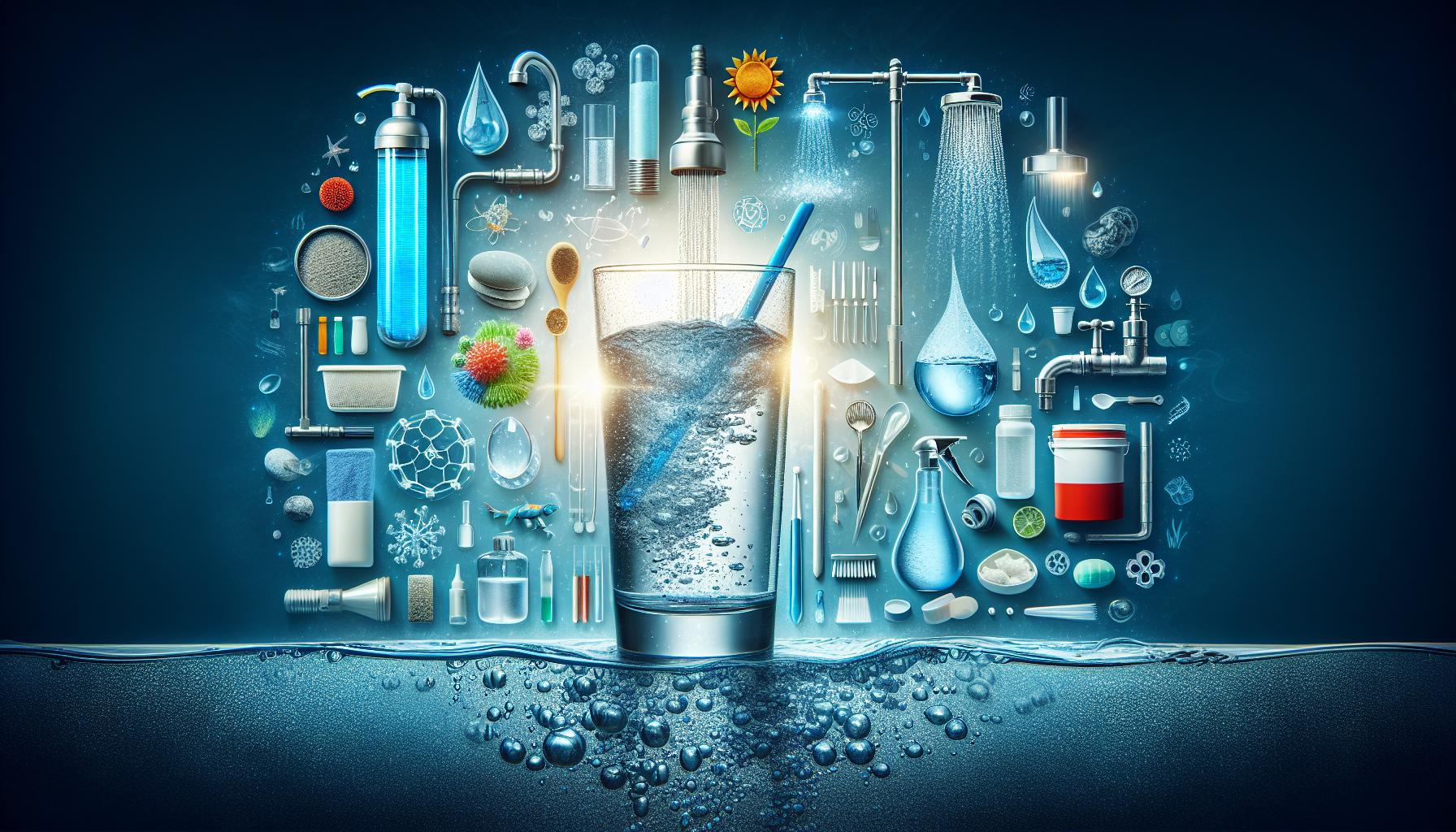
Common Contaminants Found in Shower Water
While most people associate drinking water safety with what comes out of their kitchen taps, shower water can also pose health risks. In fact, the water that flows from your showerhead may contain harmful contaminants that can impact not only your skin but also your overall health. Understanding these common contaminants is essential for ensuring that you and your family are protected.
Common Shower Water Contaminants
Some of the most prevalent contaminants found in shower water include:
- Chlorine: Used as a disinfectant in municipal water supplies, chlorine can cause skin irritation and respiratory issues when inhaled as steam while showering.
- Lead: Residual lead can leach from old pipes and plumbing fixtures. Prolonged exposure can lead to serious health concerns, especially for children.
- Volatile Organic Compounds (VOCs): These chemicals, which can evaporate at room temperature, originate from industrial processes and household products. They may enter your water supply and subsequently be released into the air as you shower.
- Heavy Metals: Aside from lead, other heavy metals such as mercury and arsenic can also contaminate shower water, resulting in various health risks when absorbed through the skin.
- Bacteria and Pathogens: Showerheads can harbor bacteria, including Legionella, which can lead to serious respiratory infections.
To further illustrate the potential risks, a table summarizing the contaminants and their effects can be useful:
| Contaminant | Health Risks |
|---|---|
| Chlorine | Skin irritation, respiratory issues |
| Lead | Nervous system damage, developmental issues in children |
| VOCs | Short-term headaches, long-term organ damage |
| Heavy Metals | Various health concerns, depending on type and exposure level |
| Bacteria | Respiratory infections, especially in vulnerable populations |
To mitigate these risks and determine if your shower water is safe, consider conducting a water quality test or installing a comprehensive filtration system. Effective solutions like carbon filters, reverse osmosis systems, or specialized shower filters can help reduce harmful contaminants, ensuring your shower experience is not only refreshing but also safe. Understanding the question of “Is Shower Water Safe to Drink? Risks and What You Should Know” involves recognizing these contaminants and taking actionable steps to protect your health.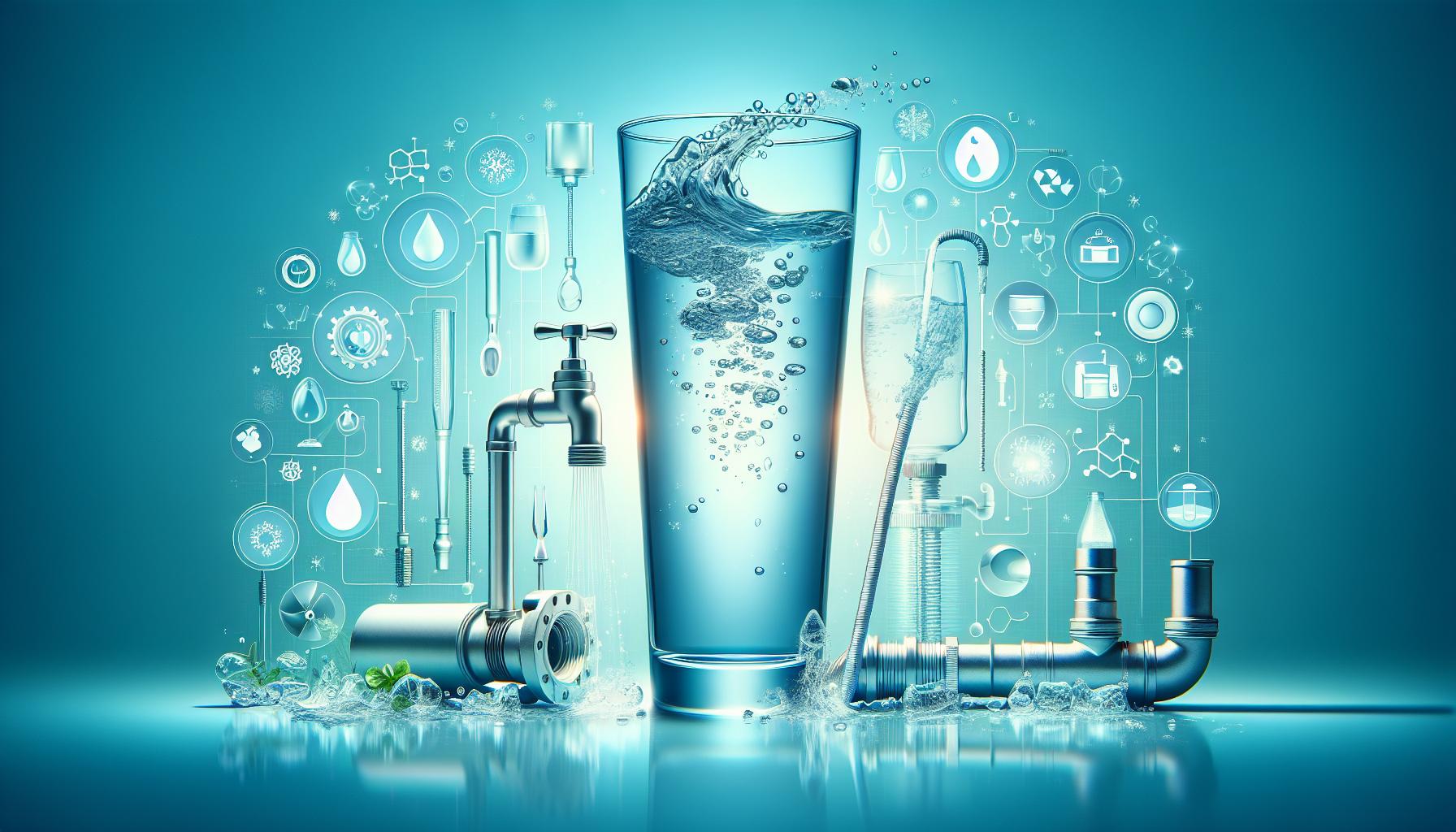
Tips for Reducing Risks When Using Shower Water
Using water from your shower might seem convenient, but understanding the associated risks can help you make safer choices. Many people are unaware that shower water can contain harmful contaminants or bacteria, raising concerns about its safety for drinking. Common hazards include bacteria from biofilms in pipes, heavy metals from plumbing, and even chemicals from shower products. To ensure your well-being and mitigate these risks effectively, here are some proactive strategies you can adopt.
Implement Home Water Filtration Systems
Investing in a quality home water filtration system can significantly enhance the safety of your drinking water. Look for filters that are certified to remove a wide range of contaminants, including chlorine, lead, and bacteria. Here are some options to consider:
- Point-of-Use Filters: These are installed directly on your faucet or under the sink, providing filtered water for immediate use.
- Whole House Systems: Designed to purify all water entering your home, these systems ensure that both drinking and shower water meet safety standards.
- Activated Carbon Filters: Effective at removing sediments and contaminants, these can improve the taste and safety of your water.
Maintain Your Plumbing System
Regular maintenance of your plumbing can prevent contamination from old pipes. Here’s what you can do:
- Inspect and Replace Old Pipes: If your home has aging plumbing, consider replacing lead pipes or those made of galvanized metal to reduce leaching of harmful substances.
- Flush Your Faucets: Before drinking, always let the tap run for a few moments to flush out any stagnant water that may be present in the pipes.
Monitor Water Temperature and Quality
Although this may sound basic, be mindful of your water’s temperature and clarity when showering or considering it for drinking:
- Keep Water Temperature Moderate: High temperatures can increase the release of certain contaminants from pipes, so aim to keep your shower water below 140°F.
- Check for Clear Water: Avoid drinking water that appears cloudy or discolored, as it may indicate the presence of pathogens or sediments.
By understanding the risks associated with shower water and implementing these practical measures, you can significantly reduce the potential dangers linked with its consumption. Always prioritize safety by choosing the best practices outlined above, ensuring that your water is as clean and healthy as possible.
Expert Insights: When Drinking Shower Water Might Be Acceptable
While the idea of drinking shower water might seem unconventional, there are specific scenarios where it could be considered acceptable. Understanding the origins and treatment of your home’s water supply is crucial. Most shower water originates from treated drinking water sources that meet safety standards for general use, such as bathing and cooking. However, before deciding to drink shower water, it is essential to evaluate potential contaminants introduced through plumbing systems, storage tanks, or infrequent maintenance.
Quality Considerations
In certain situations, shower water might be safe to ingest, particularly in households that have recently performed extensive plumbing work or have unused, well-maintained plumbing systems. If you’re confident that your water supply remains clean and free from contaminants, you might find it acceptable to sip on a few droplets—especially if you have a filtered or purified supply. Remember, contaminants like bacteria and organic materials can accumulate in water storage tanks if not properly monitored or cleaned. Regular assessment and maintenance of water systems can reduce these risks significantly.
Situational Awareness
There are instances when shower water may be particularly safe for consumption:
- Filtered Systems: If your shower is connected to a water filtration system that removes harmful substances, drinking that water may be more acceptable.
- Emergency Situations: In dire circumstances, accessing shower water may be better than consuming unsafe water from other sources that may be contaminated.
- Minimal Contamination: If you consistently maintain your plumbing, and your water supply is treated effectively, the risk of harmful contaminants may be significantly lower.
Even when conditions are favorable, it’s prudent to remember that while shower water can come from safe sources, it is not treated for drinking purposes. Thus, while it may not pose immediate health risks in some cases, caution should always prevail. Always assess your specific water quality and potential health effects, as mentioned in the article “Is Shower Water Safe to Drink? Risks and What You Should Know”. By doing so, you can make informed decisions regarding your health and wellbeing.
The Importance of Water Quality Testing in Your Home
Water is a vital resource that sustains life, making its quality a paramount concern, especially in our homes. Many individuals might assume that water from their showers is safe for all uses, but this isn’t always the case. In fact, understanding the nuances of water quality testing is essential for safeguarding your health and well-being. The risks associated with using untreated or poorly treated water can lead to various health problems, including skin irritation, rashes, and potentially exposing you to harmful contaminants.
In households, water quality testing should be taken seriously for several key reasons. First, the potential presence of bacteria, heavy metals, and other contaminants can often go unnoticed without proper testing. For instance, if your home is supplied by well water, regular tests can reveal issues such as high levels of iron, lead, or coliform bacteria—all of which can affect not only your skin during showers but also your overall health. Even municipal water can harbor contaminants due to aging infrastructure or failures in the treatment process, highlighting the necessity of regular checks.
The following are essential aspects to consider while testing water quality:
- Regular Frequency: Testing water quality at least once a year can help identify potential issues before they escalate.
- Comprehensive Testing: Ensure tests cover a wide range of contaminants, including heavy metals, pH levels, and microbial content.
- Professional Assistance: Engage certified professionals for accurate testing and assessments to interpret the results correctly.
Actionable Steps to Ensure Safe Water Quality
To maintain high water quality in your home, consider implementing the following strategies:
| Strategy | Description |
|---|---|
| Install Water Filters | Using appropriate filtration systems can help remove sediment, chlorine, and other contaminants from shower water. |
| Monitor and Maintain Plumbing | Regularly inspect and maintain pipes to prevent rust and leaks that could compromise water quality. |
| Educate Yourself | Stay informed about local water quality reports and understand what contaminants are common in your area. |
Ensuring the safety and quality of your home’s water supply not only protects your health but also enhances your quality of life. By actively testing and monitoring your water, you can mitigate risks associated with shower water and other uses, ultimately allowing you to enjoy peace of mind.
Alternatives to Shower Water: Safe Hydration Practices
Drinking water is essential for maintaining hydration and overall health, but what if the water available to you isn’t safe or appealing? Many individuals are concerned about the safety of the water that comes from their showers, which leads to the question: are there effective alternatives to shower water for hydration? The good news is that there are plenty of safe and healthy options that can help you stay hydrated without relying on potentially contaminated sources.
One effective strategy is to explore flavored water options that enhance hydration without the risks associated with shower water. Incorporating fruits, herbs, or even vegetables into your drinking water can make hydration more enjoyable and appealing. For instance, cucumber and mint infusions provide a refreshing twist, while citrus fruits like lemon and lime can add a zesty flavor that encourages you to drink more throughout the day. Try different combinations to see what flavors you enjoy most, ensuring you keep the hydration levels high.
Alternative Beverages for Hydration
While water is the best choice, there are several other beverages that can serve as excellent hydration sources. Here are some recommendations:
- Herbal Teas: Naturally caffeine-free and can be consumed hot or cold.
- Coconut Water: Rich in electrolytes, it’s an excellent hydrator after exercise.
- Maple Water: Contains natural minerals and is surprisingly hydrating, making it a great option beyond regular water.
- Vegetable Broth: Low in calories and packed with nutrients, broth can provide hydration along with essential vitamins and minerals.
- Fruit Juices: Opt for 100% fruit juice without added sugars to maintain hydration while enjoying natural flavors.
Using these alternatives not only enhances your hydration but also helps you avoid any potential risks associated with drinking shower water. Always opt for clean, filtered water wherever possible, and look for beverages that offer additional health benefits, such as electrolytes or vitamins.
In conclusion, while the question of whether shower water is safe to drink still looms large, the reality is that you have many other reliable hydration options at your disposal. By diversifying your intake with flavored waters and healthy beverages, you can maintain hydration levels and support your overall health without the concerns associated with questionable water sources.
Frequently Asked Questions
Is Shower Water Safe to Drink?
In general, shower water is not safe to drink. Although it comes from the same source as your tap water, it may contain contaminants from the showerhead or plumbing.
Shower water can harbor bacteria and other harmful substances, especially if it’s been sitting in pipes for a long time. For health safety, it’s best to drink directly from a clean tap or filtered source instead.
What are the Risks of Drinking Shower Water?
Drinking shower water poses potential health risks due to contaminants like bacteria and chemicals from soap and shampoo. Regular exposure can lead to gastrointestinal issues.
Additionally, showerheads can accumulate biofilm, which can release particles into the water. It’s advisable to avoid drinking shower water to minimize these risks.
Can I Drink Water from a Showerhead Filter?
If you have a dedicated showerhead filter, the water may be safer to drink. Filters can help reduce contaminants, but it’s essential to ensure they’re regularly maintained.
Many shower filters can remove chlorine and other impurities. However, it’s smart to check the filter specifications to confirm its effectiveness for drinking purposes.
Why Does Shower Water Smell Different Than Tap Water?
Shower water often smells different due to chlorine, mold, or bacteria buildup in the showerhead. These elements can combine to create an unpleasant odor.
This change in smell is usually harmless but indicates that the shower and plumbing may need cleaning to maintain hygiene and improve water quality.
How Can I Ensure My Shower Water is Safe?
To ensure shower water is safe, regularly clean your showerhead and use a high-quality water filter on your tap.
Routine maintenance helps prevent bacteria buildup. Additionally, consider installing a whole-house water filter to improve the safety of all household water, including shower water.
What Should I Do If I Accidentally Drink Shower Water?
If you accidentally drink shower water, monitor for any symptoms like nausea or diarrhea. In most cases, it may not cause harm.
However, if you experience severe symptoms, consult a healthcare professional. It’s always better to err on the side of caution regarding water quality.
Are There Any Exceptions for Drinking Shower Water?
In rare cases, if the water is from a known safe source and tested for purity, it might be okay to drink, but this is not typical.
To ensure safety, it’s best to stick to drinking water from verified clean sources such as bottled or filtered water.
The Conclusion
In conclusion, while shower water may seem convenient and harmless, it comes with potential risks that shouldn’t be overlooked. Contaminants from plumbing, chemicals from soaps and shampoos, and bacteria can all make shower water unsafe for drinking. Understanding these risks empowers you to make informed decisions about your water sources. If you’re considering alternatives like water filters or bottled water, remember that they can provide safer options for hydration. Stay proactive about your health and water quality—explore practical solutions and stay curious about maintaining clean and safe water in your daily life. For more insights on water safety, feel free to delve deeper into our resources and stay informed!

